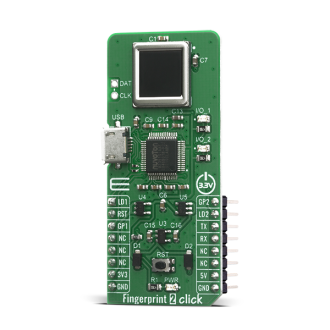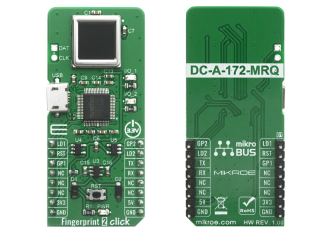
We strongly encourage users to use Package manager for sharing their code on Libstock website, because it boosts your efficiency and leaves the end user with no room for error. [more info]

Rating:
Author: MIKROE
Last Updated: 2020-07-03
Package Version: 1.0.0.0
mikroSDK Library: 1.0.0.0
Category: Fingerprint
Downloaded: 3469 times
Not followed.
License: MIT license
Fingerprint 2 Click is a new fingerprint scanner Click board simplified for everyone's use and it's very easy to implement! This add-on board consists of a high-speed Nuvoton processor which carries high-performance fingerprint algorithm developed for on-board A-172-MRQ fingerprint sensor from company ByNew Technology Inc.
Do you want to subscribe in order to receive notifications regarding "Fingerprint 2 click" changes.
Do you want to unsubscribe in order to stop receiving notifications regarding "Fingerprint 2 click" changes.
Do you want to report abuse regarding "Fingerprint 2 click".


Library Description
Library provides functions for sending commands to device and controlling it's pins
Key functions:
void fingerprint2_soft_reset ( void ) - Function for reseting devicevoid fingerprint2_send_cmd ( uint8_t *cmd ) - Function for sending command to devicevoid fingerprint2_reg_one_fp ( uint8_t fp_index ) - Function for registrating one fingerprint on specific indexExamples description
The application is composed of three sections :
void application_task ( )
{
termianl_read( );
fingerprint2_log( &log_write );
}
Additional Functions :
Note :
Other mikroE Libraries used in the example:
Additional notes and informations
Depending on the development board you are using, you may need USB UART click, USB UART 2 click or RS232 click to connect to your PC, for development systems with no UART to USB interface available on the board. The terminal available in all MikroElektronika compilers, or any other terminal application of your choice, can be used to read the message.